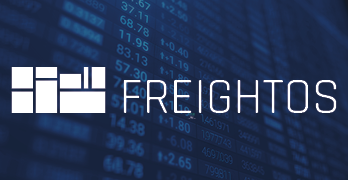FBX Index February: Market Summary

The Freightos Baltic Global Index was stable in February, increasing just 1% to $9,838/FEU, 128% higher than a year ago and more than six times the pre-pandemic norm. Although the war in Ukraine is expected to affect ocean freight and rates, those effects have yet to manifest in container prices.
Asia-North America West Coast rates climbed 4% to $16,155/FEU, nearly triple a year ago, while East Coast prices rose 8% to $18,109/FEU, 168% higher than last year and nearly seven times the norm
Just as the lead up to Lunar New Year on the transpacific did not result in much of a rate climb, neither did the weeks just after the holiday. Asia-North America West Coast rates climbed 4% to $16,155/FEU, nearly triple a year ago, while East Coast prices rose 8% to $18,109/FEU, 168% higher than last year and nearly seven times the norm.
The sharper climb to the East Coast may reflect the growing carrier and shipper focus on East Coast destination ports. Although the number of vessels waiting for a berth at LA/Long Beach has continued to drop and the volume of empty containers at the ports have also fallen, persistent delays are leading many shippers to look for alternatives. As a result, congestion at East Coast ports, such as Charleston, has increased and the latest projections see volumes remaining elevated in the coming months.
Some signs of easing demand may have led to a moderate dip in Asia-North Europe prices. Rates fell gradually throughout the month to close 5% lower than the end of January at $14,048/FEU, although this was 69% higher than last year and nearly 10 times more than typical levels. Meanwhile, Asia-Mediterranean prices dipped 1% to $14,048/FEU, 76% higher than this time last year.
Rising oil prices, especially as a result of the war in Ukraine, are likely to contribute additional surcharges to global ocean freight, although other impacts of the conflict will likely be felt most strongly on European shipping lanes.
Shippers to Europe and the Mediterranean are bracing for ripples from the war in Ukraine not just in fuel costs and possible War Risk Surcharges, but also in congestion, delays and higher costs that port and carrier bans on Russian shipments could have.
Congestion and poor reliability are already big contributors to elevated Asia-Europe rates. Diverted or suspended Russian-bound containers piling up at European and Mediterranean ports are set to worsen that congestion. The threat of rail to ocean conversions for Asia-Europe containers that traditionally cross Russia by train could also put additional strain on already tight capacity and added pressure on rates.
About Judah Levine, Research Lead, Freightos
Judah is an experienced market research manager, using data-driven analytics to deliver market-based insights. Judah produces the Freightos Group's FBX Weekly Freight Update and other research on what's happening in the industry from shipper behaviors to the latest in logistics technology and digitization.
Receive monthly container market reports direct to your inbox.